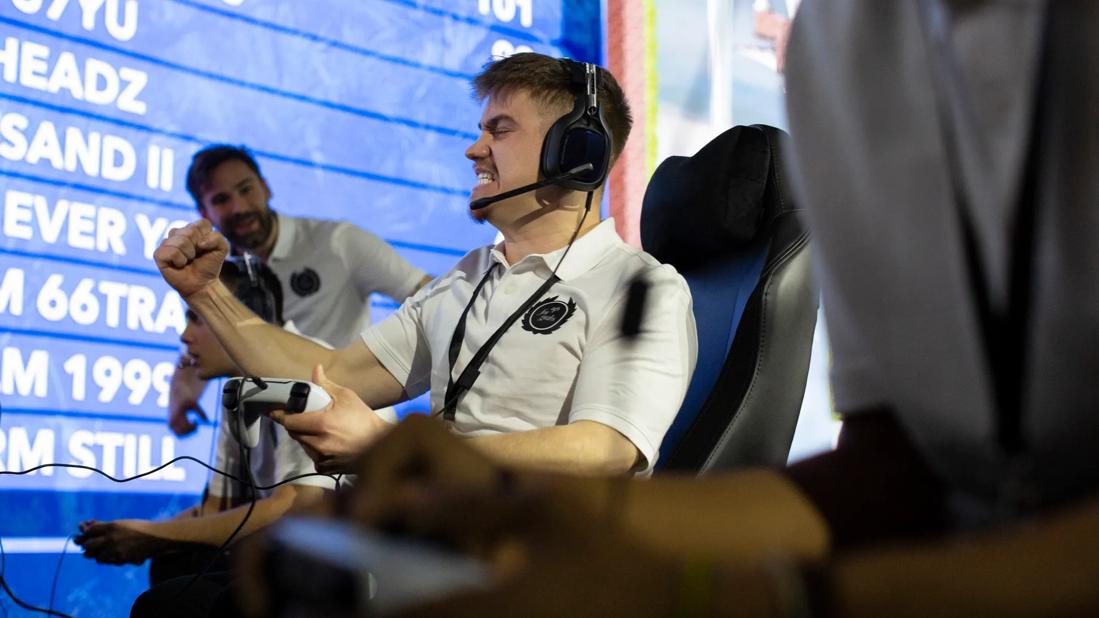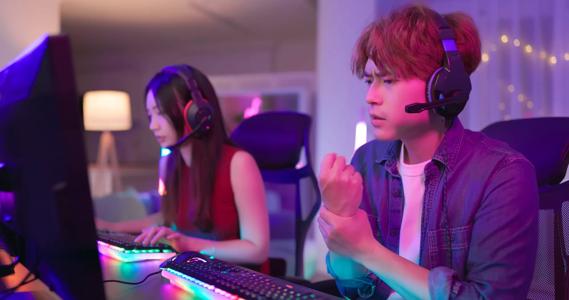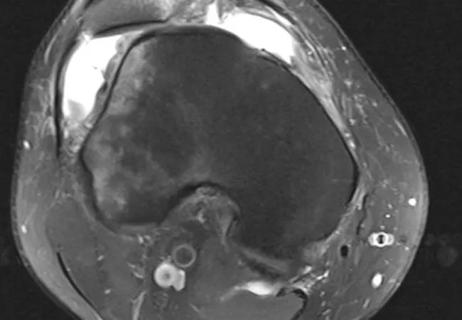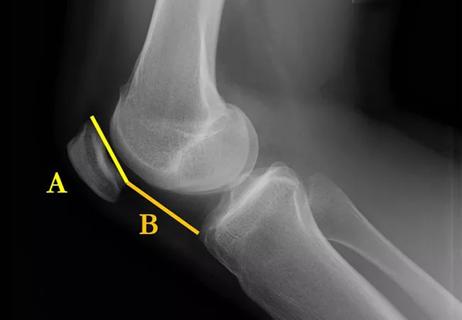Advertisement
Cleveland Clinic’s Esports Medicine team weighs in on importance of multidisciplinary care

Like traditional athletes, esports athletes can develop overuse injuries from hours of repetitive movement, sometimes at high intensity. Injuries most common in esports are forearm, neck and lower back pain due to repetitive strain or nerve entrapment; sciatica and general spine stiffness; gamer’s thumb; and carpal tunnel syndrome, says Dominic King, DO, Director of the Esports Medicine Program at Cleveland Clinic.
Advertisement
Cleveland Clinic is a non-profit academic medical center. Advertising on our site helps support our mission. We do not endorse non-Cleveland Clinic products or services. Policy
Many of these conditions are due to poor seated posture or gaming station ergonomics, which can alter natural body mechanics and cause tissues to become stretched or shortened for long periods of time. Poor ergonomics also can lead to headaches, eyestrain and other conditions that can slow an athlete’s mental processing and reaction time. Injuries that hinder an athlete’s performance can take a psychological toll, leading to performance anxiety and depression.
“Multidisciplinary care is vital to address the unique challenges that esports athletes face,” Dr. King says. “At Cleveland Clinic, we bring together specialists in sports medicine, neurocognitive and psychomotor performance, chiropractic medicine, sports vision, sports psychology, nutrition, exercise physiology, athletic training, and physical therapy to provide comprehensive support. By prioritizing health and well-being through a multidisciplinary approach, esports athletes can buff their performance and equip themselves for a legendary future in the industry — because every great quest needs a solid health bar.”
In this Q&A, members of Cleveland Clinic’s Esports Medicine team explain the care they recommend for the unique health and performance challenges of esports athletes.
Da’von Aaron, athletic trainer and esports injury prevention specialist: In traditional sports, athletes engage in running, jumping and other vigorous activities that test their endurance, strength and overall physical fitness. Conversely, esports athletes primarily use fine-motor skills and hand-eye coordination. They engage in prolonged periods of intense focus and precise movement, which places a different kind of strain on the body. While traditional athletes can get sprains, fractures and concussions due to high-impact activities, esports athletes are prone to repetitive strain injuries, mental fatigue, visual strain and musculoskeletal discomfort.
Advertisement
Jason Cruickshank, athletic trainer and esports neurocognitive, strength and conditioning specialist: Esports athletes are what we have dubbed “synaptic specialists.” To compete effectively, they must quickly process information from visual, auditory or touch inputs. These athletes require mental and physical endurance to sustain good posture, ocular tracking, hand-eye coordination, repetitive upper extremity movements and communication. To improve endurance, we recommend some traditional training techniques, including cardiovascular activity, detailed stretching routines and low-level strengthening exercises. However, many esports athletes don’t have experience with directed exercise or understand how physical training can help improve their in-game performance. That is where our team comes in, offering our experience in medicine, exercise science, athletic training and performance enhancement to prescribe training programs for the team or individual.
Cruickshank: First, assess game needs. What platform is the gamer using: desktop computer, gaming console or virtual reality device? Each platform requires different movement mechanics and tactics for injury prevention. Our Gamer’s Health Guide includes recommendations on how to set up these gaming stations.
Second, warm up the upper and lower body to prepare for long hours of esports training. This includes doing some light movement to stretch muscles in preparation for game play.
Third, monitor the time in game. Gamers should leave their gaming station at least every one to two hours for at least six minutes of movement. Typically, that is enough time to leave their chair, go to the kitchen, drink some water and walk around the house for a lap or two before returning to their station. This change of scenery improves their physical and mental state and allows for improved focus and mental processing in game.
Advertisement
Fourth, prevent eyestrain by following the 20-20-20 rule. Every 20 minutes, gamers should look away from the screen and focus on an object roughly 20 feet away for 20 seconds.
Last but not least, get out and move. We encourage gamers to find something completely different from game play that they enjoy (e.g., walking, biking, weight training) and do it for at least 30 minutes five days a week.
Aaron: Performing regular stretching and physical exercise is crucial. Stretching the hands, wrists, neck and back can prevent stiffness and repetitive strain injuries, while general physical fitness routines can enhance overall musculoskeletal health. Strength and conditioning exercises that focus on the upper body help support prolonged static postures. Using ergonomic equipment, such as chairs with proper lumbar support, desks at appropriate heights and peripherals designed to minimize strain, can further reduce injury risk. Maintaining proper hydration and a balanced diet rich in nutrients is vital for cognitive and physical health. And consistent, high-quality sleep is important for mental and physical recovery.
Matthew Kampert, DO, sport and exercise medicine physician: By incorporating physical fitness in their training regimen, esports athletes can enhance both physical and cognitive capabilities to improve performance and reduce risk of injury. Regular aerobic exercise boosts blood circulation and oxygen supply to the brain, enhancing cognitive functions that are vital for strategic decision-making and quick reflexes in gaming. Physical conditioning helps esports athletes endure long gaming sessions with reduced fatigue. Incorporating strength training and cardiovascular workouts increases overall stamina, especially in scenarios that require prolonged concentration and rapid responses. Strength training improves muscle memory and coordination, leading to quicker in-game responses and better control. Exercise also promotes the release of endorphins, which can reduce stress and anxiety. Lower stress levels contribute to improved in-game performance and better decision-making under pressure.
Advertisement
Drew Schwartz, DC, chiropractor and esports ergonomics specialist: Proper ergonomics are critical to preventing tissue irritation and injury. By keeping joint levers short and keeping peripherals close to the body, we put less strain on the body. More strain means more pain, which impedes the performance capacity of tissues and also takes a mental toll. Mental strain due to pain can cause the athlete to make more mistakes, lose composure mid-game and weaken decision-making.
Aaron: An adjustable chair with lumbar support helps maintain the natural curve of the spine, reducing the risk of back pain. Desk height should allow for elbows to be at a 90-degree or greater angle when typing or using a mouse, to minimize strain on shoulders and wrists. The monitor should be positioned at eye level, about 20-30 inches away, to prevent neck and eyestrain. Using an ergonomic keyboard or mouse can reduce wrist strain, and keeping these devices close to the body minimizes strain due to reaching. Using sit-stand desks allows athletes to alternate between sitting and standing positions, minimizing prolonged static postures and reducing the risk of associated musculoskeletal issues.
Dr. Schwartz: Hand-strengthening work is critical for improving play and keeping injuries at bay. These exercises can be performed anywhere at any time with simple hand-squeezers, rubber bands and light weights. Athletes also need to promote tissue pliability with self-mobilization with a lacrosse ball or light massage gun. These techniques are easy to incorporate anytime throughout the day. Doing so will help promote healing and keep tissues functioning at a high level.
Advertisement
Cruickshank: Many esports athletes think they need to train in their game for four hours or more each day. While repetition does solidify in-game skills, it is easy to overtrain this way. To help decrease tissue load and improve endurance, focus and concentration, esports athletes should start gaming sessions with a 10-minute movement-based warm-up of the core, upper body and lower body. Using light activity to both warm up and stretch prepares the muscles for game play. During gaming, the athlete should take a break for 6-10 minutes every hour or at least 15-20 minutes every two hours. Setting a timer can help. Similar to the presession warm-up, these breaks should include both strengthening and stretching. When the athlete has finished gaming, they should complete a set of exercises and stretches to cool down. In addition, they should follow a preplanned, directed exercise routine incorporating cardiovascular and resistance training three to five days per week.
Dr. Kampert: It may help to develop a detailed schedule with time slots for gaming practice, physical exercise, rest and other daily activities. Ensure the schedule includes seven to nine hours of sleep each night, which is essential for recovery and cognitive function. Exercise sessions don’t need to be long. Several shorter workouts (20-30 minutes each) throughout the day may be more convenient. Include a mix of activities, such as yoga, Pilates, resistance training and aerobic exercise to keep the workout engaging and target different muscle groups. Incorporate activities like meditation, deep breathing exercises or mindfulness practices to manage stress and improve focus.
Matthew Sacco, PhD, sport psychologist: There are two types of strategies, preventive and interventional.
Preventive strategies are used on an ongoing basis and are designed to facilitate healthy day-to-day functioning. For example, having a well-outlined routine that includes time away from gaming for daily activities like exercise, making meals and showering is important for mental health. It also should include time for socialization — specifically face-to-face interactions with friends and family. Esports athletes have an increased risk of isolation, and making time for others is important. By engaging in these and other preventive strategies, esports athletes can reduce the likelihood of becoming overwhelmed in high-pressure competitive situations.
However, there are times when interventional strategies are helpful. Interventional strategies are used in specific, more stressful moments. They are designed to help reduce negative impacts on functioning. For example, during a competition, stepping away from the game for a few minutes to perform basic relaxation exercises (e.g., diaphragmatic breathing, progressive muscle relaxation, guided imagery, meditation) can help activate the parasympathetic branch of the autonomic nervous system and begin the process of shifting from a fight-or-flight response to a rest-digest-and-repair response. Having positive self-talk strategies also can help, especially when it’s not feasible to walk away from the console. This can include creating a mantra to repeat, verbalizing strengths or using grounding techniques. These strategies can be developed with the help of a mental health expert.
Diane Tucker, OD, optometrist: Esports athletes can develop digital eyestrain, manifesting as headaches, blurred vision and dry eyes. These symptoms can be caused by long periods of focusing on a computer screen, poor lighting, improper viewing distances, poor seated posture, uncorrected vision problems or a combination of factors. To improve visual performance, the esports athlete should:
If visual disorders persist, optometric vision therapy may help. This therapy is an individualized progressive program of vision procedures done both in the clinic and at home, sometimes using therapeutic lenses, prisms, filters or other tools. It can improve visual comfort and efficiency and change how visual information is interpreted.
Advertisement

Research by Cleveland Clinic and Sports Data Labs to improve health and function in everyday patients as well as elite athletes

Gamers are athletes who can benefit from athletic training

A behind-the-scenes look at Cleveland Clinic’s role as medical services provider of the 2023 Summer Series

Rest is often not the best care for gamers’ overuse injuries

Conservative treatments were ineffective for 29-year-old with chronic heel pain

Sports medicine pioneer John Bergfeld, MD, shares how orthopaedics has changed since doing his first ACL repair in 1970

Computer simulation identifies causes of instability

Youth and open physes are two factors that increase risk of recurrence